Mucinous Cystadenoma of the Ovary
A 50-year-old female with a history of progressive abdominal distention and discomfort for six months.
A 50-year-old female with a history of progressive abdominal distention and discomfort for six months. There was no history of colicky pain, fainting attacks, vomiting or other gastrointestinal attacks. She had no previous history of any illnesses, allergies or operations.
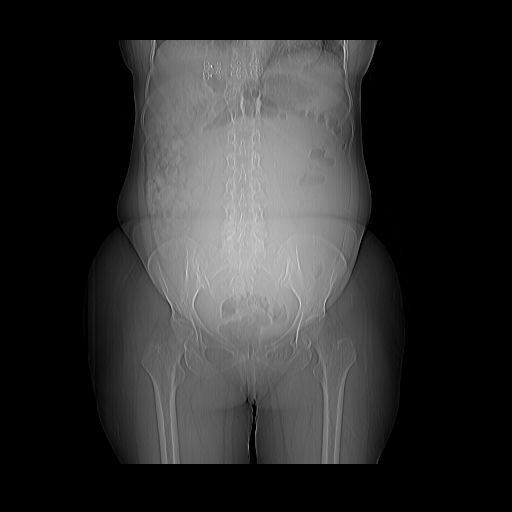
Figure 1: AP Skiagram shows abdominal distention and increased opacification of abdomen.
Figures 2 - 13: CT sections showing cystic SOL.

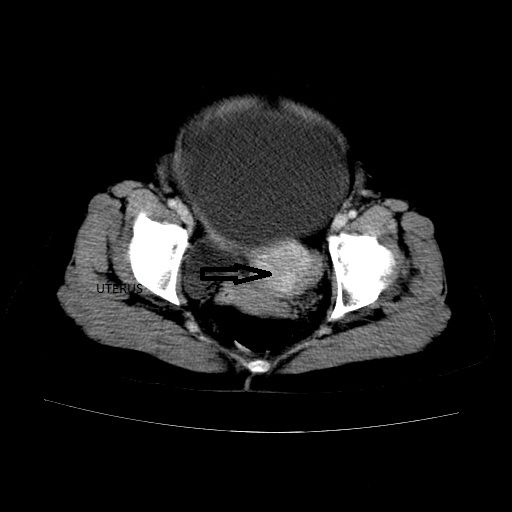
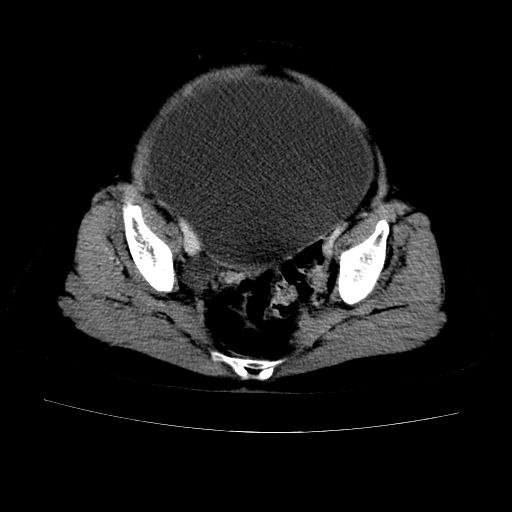
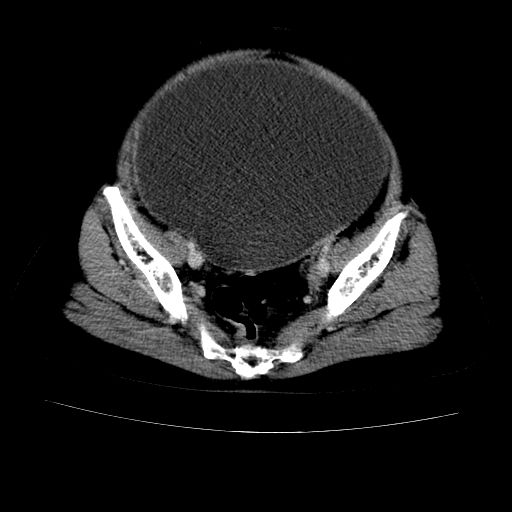
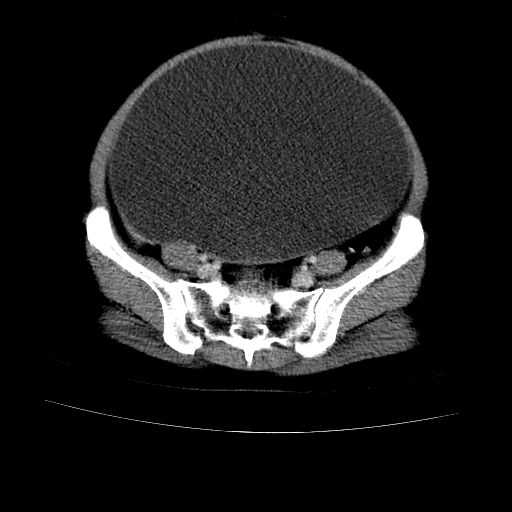
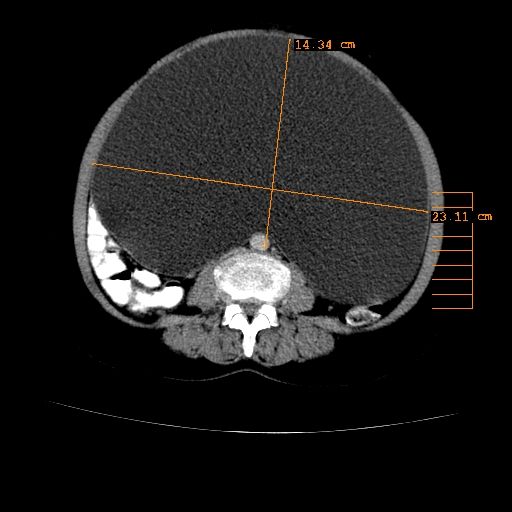
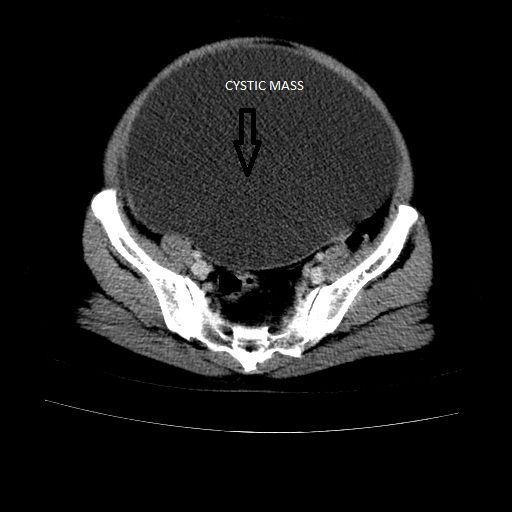
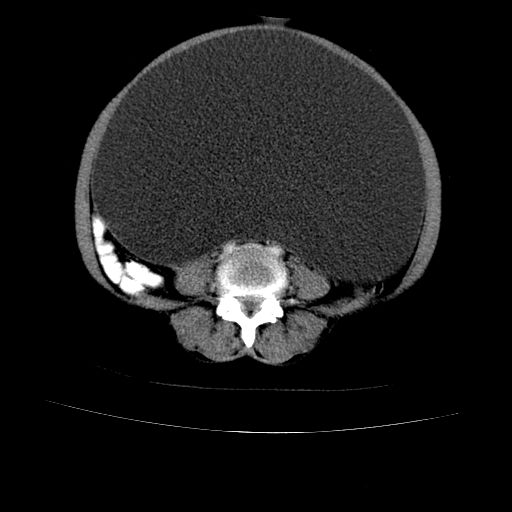
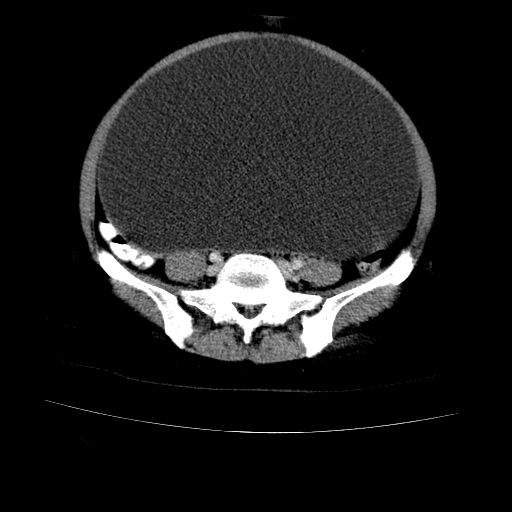
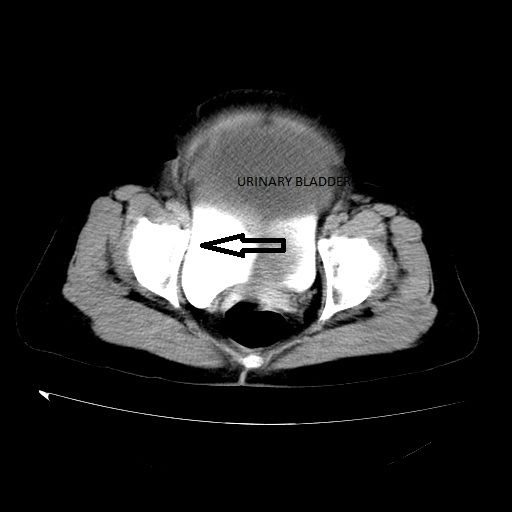
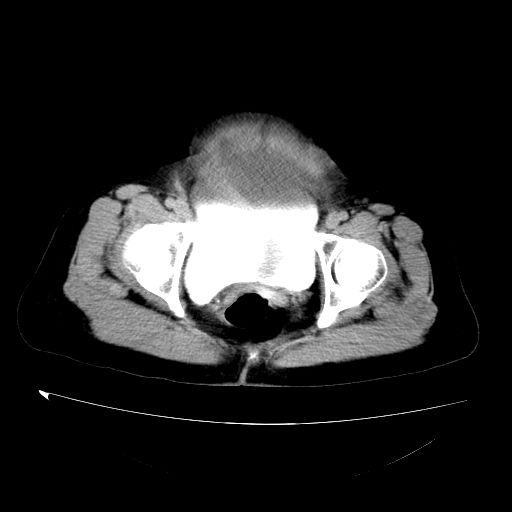
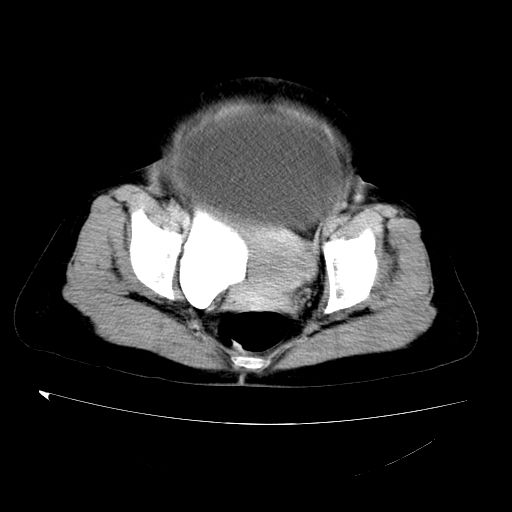
Based on sonographic examinations, a huge abdominal cystic mass that occupied all of the abdomen and pelvic cavity was noted. On general examination, she was slim and undernourished. She weighed 52 kg. Pallor was present and vital signs were normal. There was no icterus, edema, or lymphadenopathy. Abdominal examination showed general distension.
Abdominal CT scan was advised. Uterus was normal and seen separate from the mass. Cystic mass was seen extending from pelvis to upper abdomen measuring 30 x 14 x 23 cm. Walls of cystic SOL were thin with no solid or papillary projection. No septae seen. No calcification of wall seen.
Ovaries could not be visualized on CT separately. Urinary bladder was compressed. Bowel loops displaced posteriorly. Kidneys were normal. There was no free fluid in the abdomen. Pathology confirmed cystadenoma of the ovary. The postoperative period was uneventful and the patient was discharged on the sixth day after operation.
Discussion: Mucinous cystadenomas (MCAs) of the ovary are known for their potential to grow to massive proportions and are often incidentally diagnosed. They are typically benign tumors accounting for 15 percent of ovarian neoplasms and up to 80 percent of all mucinous tumors. Ovarian MCAs are characteristically unilateral, only 5 percent presenting bilaterally, and the peak incidence occurs among women who are between 30 and 50 years of age.
Ovarian neoplasms may be divided according to original cell types into three main groups: epithelial, stromal, and germ cell. Taken as a group, the epithelial tumors are by far the most common type. The single most common benign ovarian neoplasm is the benign cystic teratoma; however, according to some studies, it is serous cystadenoma. The most common types of epithelial neoplasms encountered were benign cystadenoma, of which 75 percent were serous cystadenomas and 25 percent were MCAs.
Mucinous tumors of the ovary occur principally in middle adult life and are extremely rare prior to menarche. The histopathological groups of mucinous tumors are described as follows: (1) MCA, (2) mucinous tumor of uncertain malignant potential (borderline), and (3) mucinous carcinoma . MCA appears as a large cystic mass, is often multiloculate, and contains sticky gelatinous fluid. Microscopically, the tumor consists of cystic spaces lined by tall columnar epithelium with mucinous differentiation. In general, ovarian MCAs tend to present with abdominal distention.
The vast majority of mucinous tumors are benign (75 percent), 10 percent borderline, and 15 percent carcinomas. One of the major differential diagnoses of ovarian cysts are omental cysts. Omental cysts occur in all age groups, but most often they present in children and young adults . These masses may be simple or multiple, may be huge, and simulating ascites. Ascites is another entity that must be included in the list of differential diagnoses.
Other diagnoses may be mesenteric cysts, cysts arising from retroperitoneal structures like pancreatic pseudocysts, urinary retention, bladder diverticulum, hydronephrosis, cystic lymphangiomas, choledochal cysts, splenic cysts, multicystic dysplastic kidney, gastrointestinal duplication cysts and large uterine tumors. Management of ovarian cysts depends on the patient's age, the size and structure of the cyst and menopausal status. Surgical management of cysts is by laparotomic or laparoscopic cyst excision or cystectomy with oophorectomy.
Harpreet Singh, MD, JP Scan private diagnostic center, Khanna, Punjab, India
Emerging AI Algorithm Shows Promise for Abbreviated Breast MRI in Multicenter Study
April 25th 2025An artificial intelligence algorithm for dynamic contrast-enhanced breast MRI offered a 93.9 percent AUC for breast cancer detection, and a 92.3 percent sensitivity in BI-RADS 3 cases, according to new research presented at the Society for Breast Imaging (SBI) conference.
The Reading Room Podcast: Current Perspectives on the Updated Appropriate Use Criteria for Brain PET
March 18th 2025In a new podcast, Satoshi Minoshima, M.D., Ph.D., and James Williams, Ph.D., share their insights on the recently updated appropriate use criteria for amyloid PET and tau PET in patients with mild cognitive impairment.
Can Abbreviated Breast MRI Have an Impact in Assessing Post-Neoadjuvant Chemotherapy Response?
April 24th 2025New research presented at the Society for Breast Imaging (SBI) conference suggests that abbreviated MRI is comparable to full MRI in assessing pathologic complete response to neoadjuvant chemotherapy for breast cancer.
Clarius Mobile Health Unveils Anterior Knee Feature for Handheld Ultrasound
April 23rd 2025The T-Mode Anterior Knee feature reportedly offers a combination of automated segmentation and real-time conversion of grayscale ultrasound images into color-coded visuals that bolster understanding for novice ultrasound users.